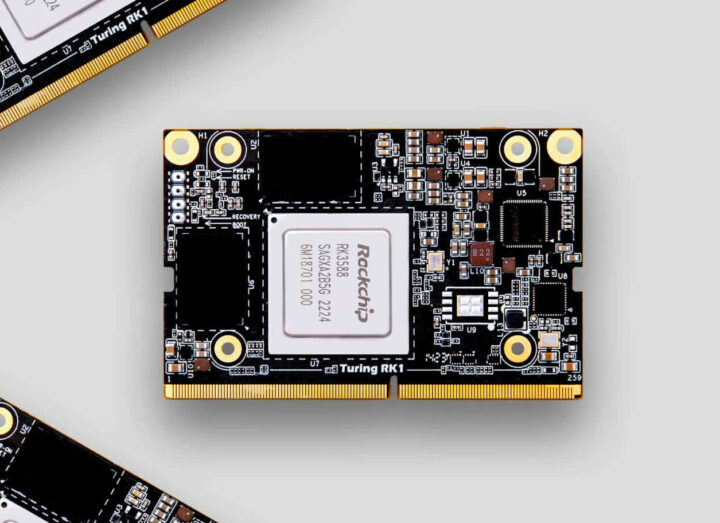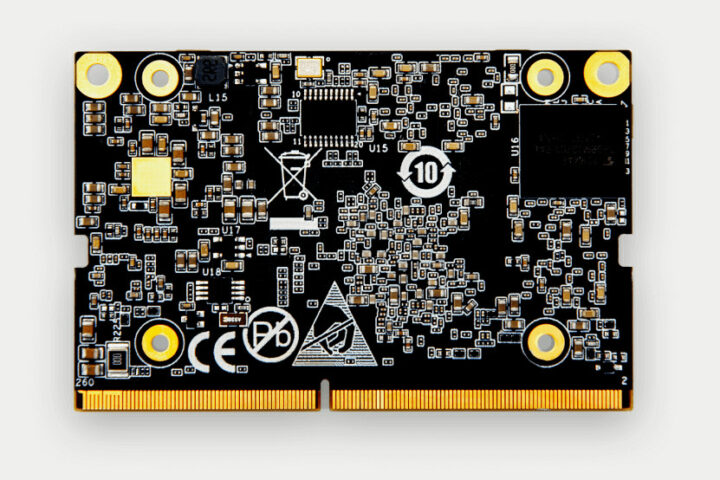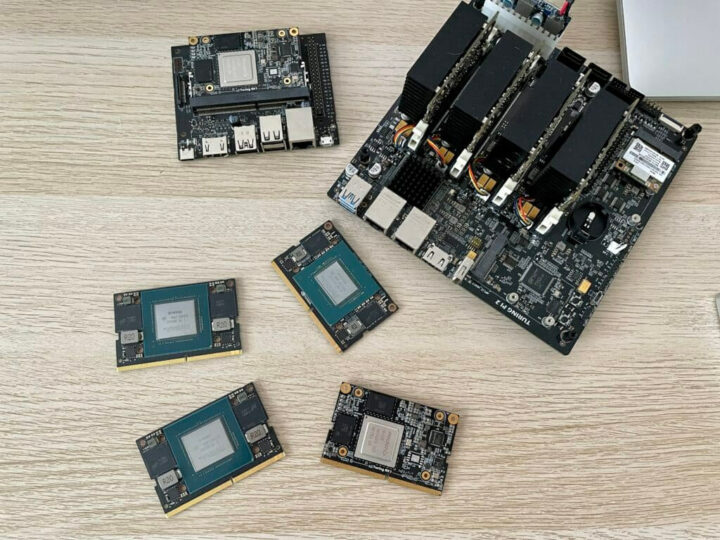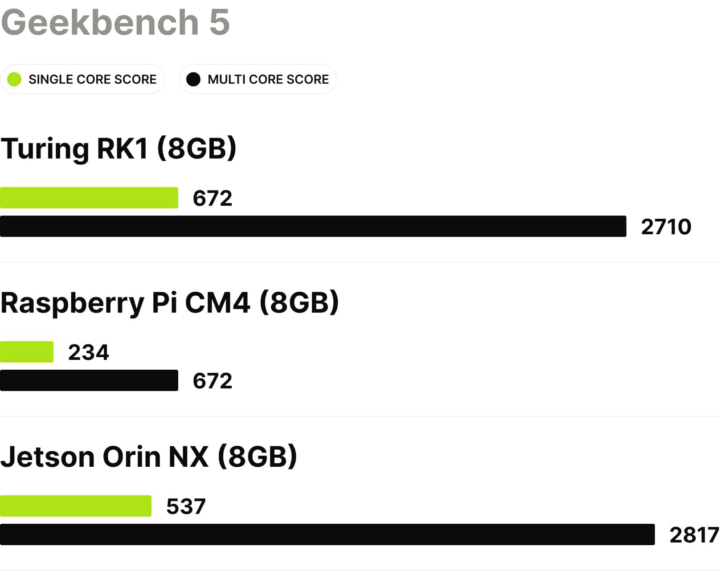Turing Pi has been making mini-ITX cluster boards for Raspberry Pi CM4 and NVIDIA Jetson modules for over four years, but last year, the company teased their own Turing RK1 system-on-module based on a powerful Rockchip RK3588 Arm processor with 6 TOPS NPU while launching the Turing Pi 2 cluster board on Kickstarter and raising over 2 million dollars in the process.
The Turing RK1 is now available for pre-order with the 8GB RAM going for $130, the 16GB model for $170, and you’d have to spend $260 if you need 32GB RAM. Most people will probably want to add $10 to purchase the RK1 heatsink with a built-in fan as well. Pre-orders are expected to start shipping on October 27.
Turing RK1 specifications:
- SoC – Rockchip RK3588
- CPU – Octa-core processor with 4x Arm Cortex-A76 @ 2.4 GHz, 4x Arm Cortex-A55 @ 1.8 GHz
- GPU – Arm Mali-G610 MP4 GPU with support for OpenGL ES 1.1, 2.0, and 3.2, OpenCL up to 2.2, and Vulkan 1.2
- VPU
- Video decoder: H265, H264, VP9, AV1/AVS2 up to 8Kp60 (10-bit)
- Video encoder: 8K H.265 and H.264 encoder, JPEG encoder
- AI accelerator – 6 TOPS NPU
- System Memory – 8GB, 16GB, or 32GB LPDDR4
- Storage – 32GB eMMC 5.1 flash
- 260-pin SO-DIMM connector that follows Jetson Nano and NX modules design
- Storage – SD 3.0 interface
- Display I/F – HDMI 2.1 up to 8Kp60, DisplayPort 1.4, 2-lane or 4-lane MIPI DSI
- Camera I/F
- 2x 4-lane MIPI CSI Rx interfaces
- 1x 4-lane MIPI CSI DPHY Rx interface
- Audio – 2x I2S
- Networking – Gigabit Ethernet
- USB – 2x USB 3.0, 2x USB 2.0
- PCIe – PCIe Gen 3.0
- Power Supply – 5V @ 3V via USB-C interface
- Dimensions – 69.6 x 45 mm
- Weight – 17 grams
- Temperature Range – Operating: -20°C to 70°C; storage: -40°C to 85°C
The module comes preloaded with Ubuntu Server 22.04 LTS with Linux 5.15 LTS kernel, and some documentation is available with the specs and instructions to use the 6 TOPS NPU with the RKNN toolkit v2. Since the Turing RK1 system-on-module is compatible with Jetson Nano and NX modules, it can not only be used with the Turing Pi 2 cluster board, but with other carrier boards made for Jetson modules with a SO-DIMM edge connector. For example, it can replace the Jetson Nano in the official developer kit as shown below.
The single-core and multi-core integer performance of the Rockchip RK3588 is much higher (about four times better) than the one of the Broadcom BCM2711 found in the Raspberry Pi CM4 module and about the same as the one of the Jetson Orin NX, at least according to Geekbench 5 [Update: Turing appears to be picked GeekBench results showing a lower score than normal for the 6-core NVIDIA Jetson Orin NX 8GB that was underclocked. See comments section]. But obviously, the Jetson Orin NX is much more powerful when it comes to AI inference with 70 to 100 TOPS, compared to the meager 6 TOPS of the RK3588 NPU. It also costs over three times as much as the RK1 module in the same RAM configuration. It all depends on what you want to achieve.
Turing says users can mix and match Compute Module 4, Jetson Nano/NX, and RK1 modules on the Turing Pi 2 mini-ITX cluster, so you have a powerful NVIDIA Jetson Orin NX 8GB for demanding AI workloads, and more affordable RK1 or CM4 modules in the other slots.

Jean-Luc started CNX Software in 2010 as a part-time endeavor, before quitting his job as a software engineering manager, and starting to write daily news, and reviews full time later in 2011.
Support CNX Software! Donate via cryptocurrencies, become a Patron on Patreon, or purchase goods on Amazon or Aliexpress








